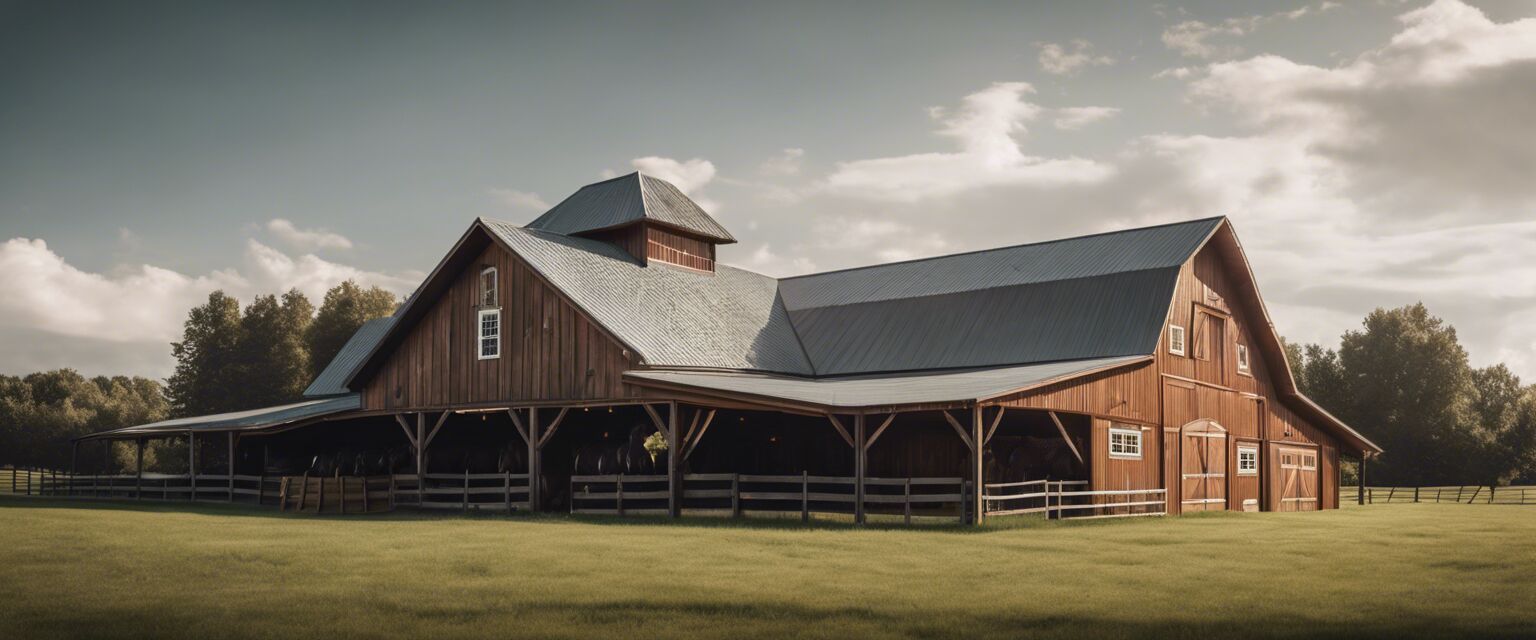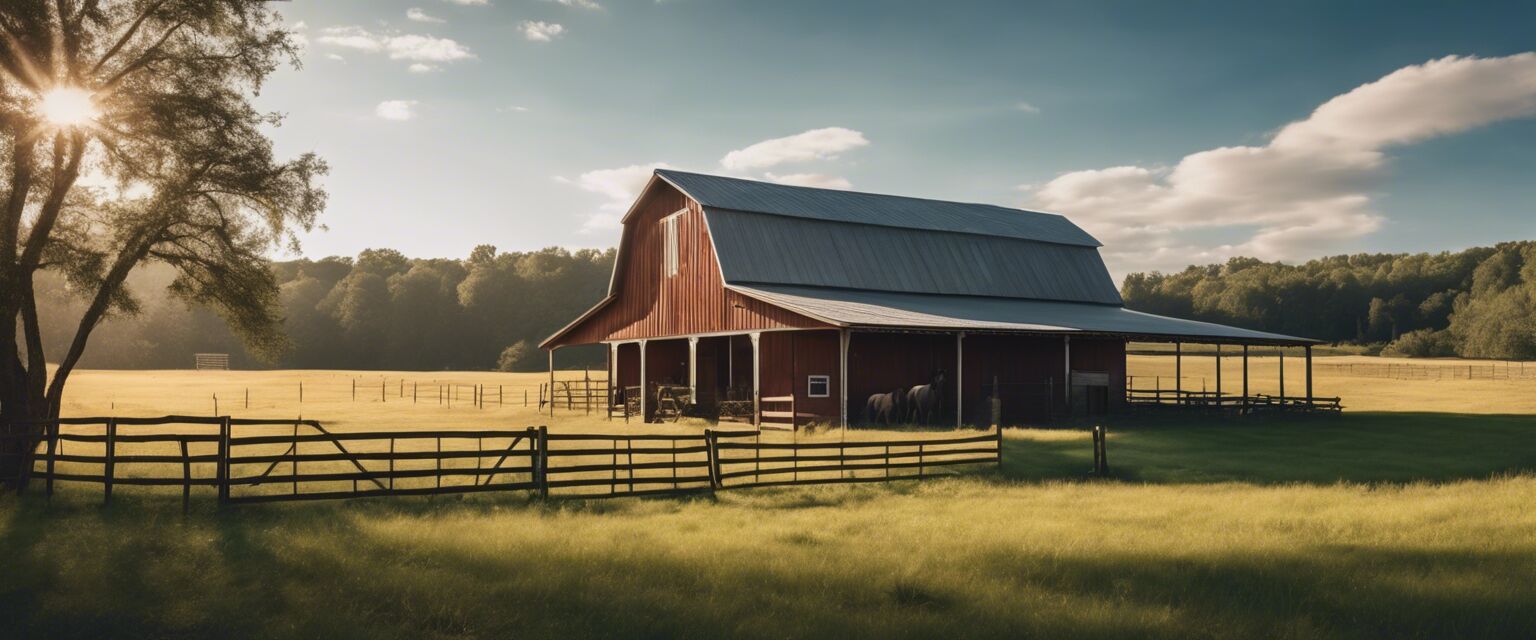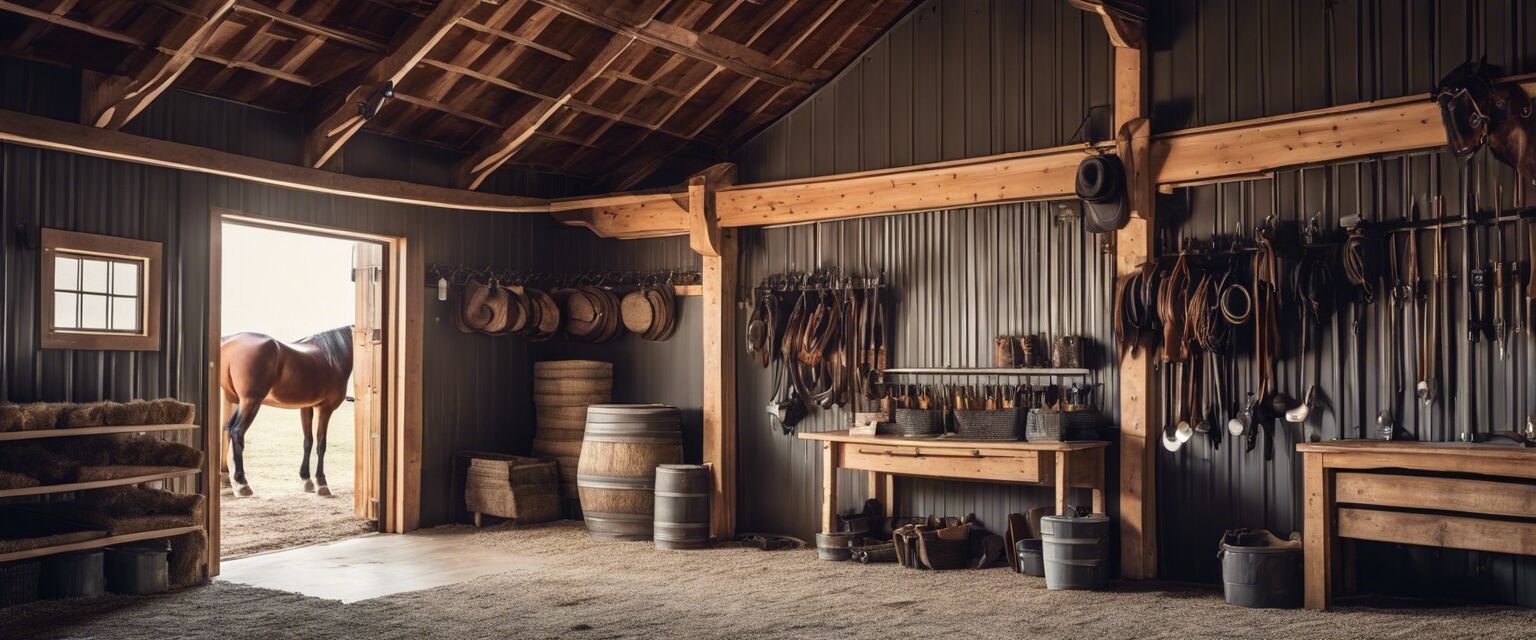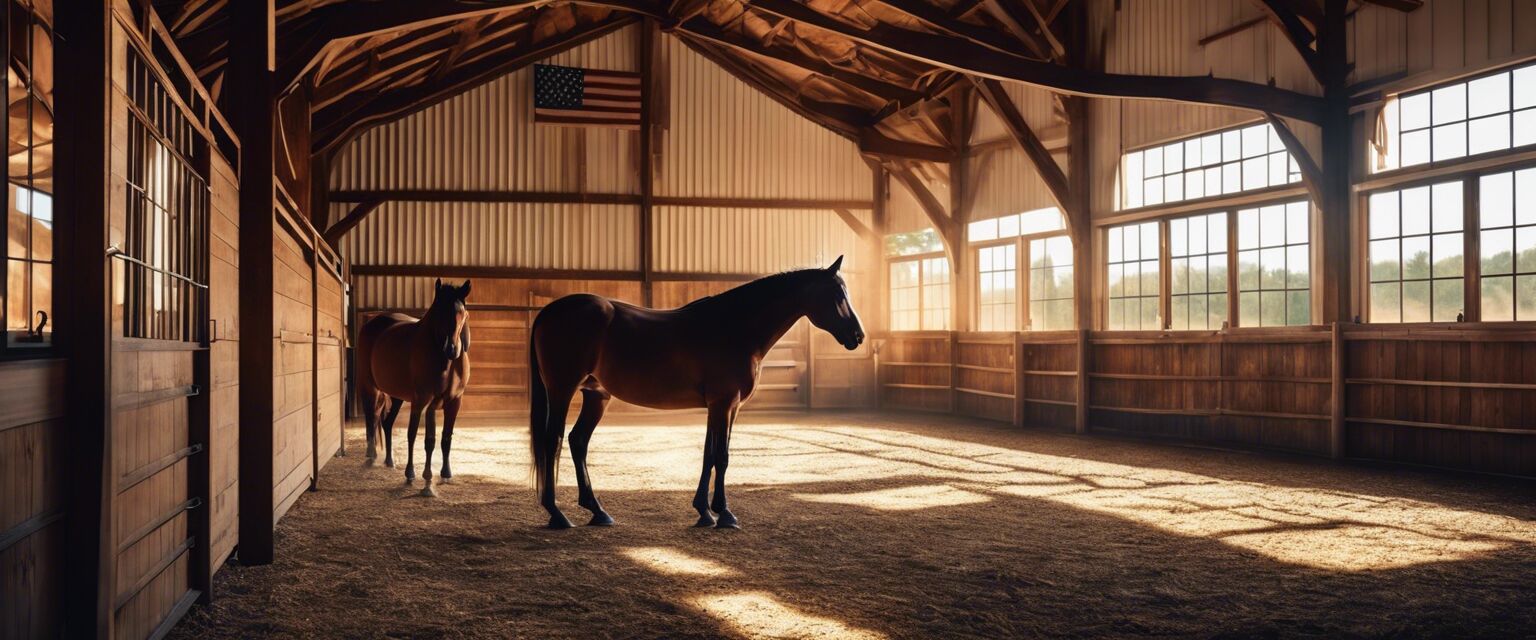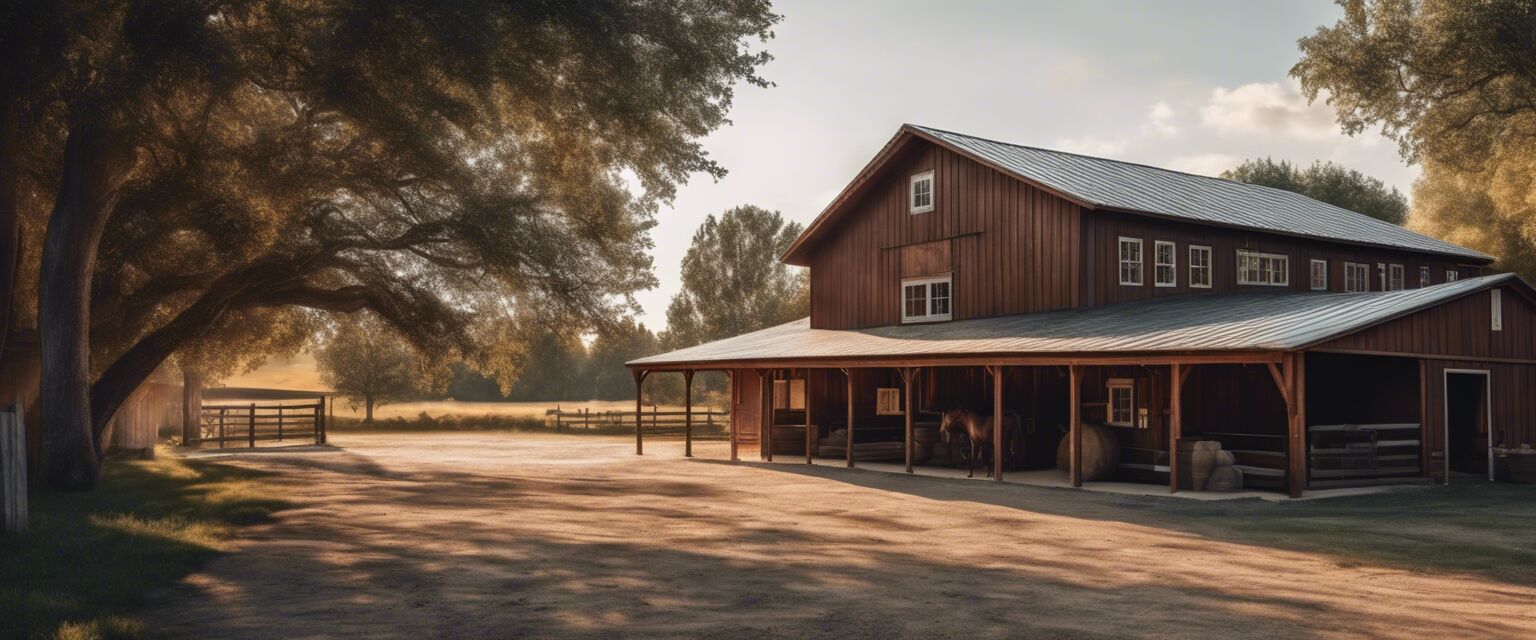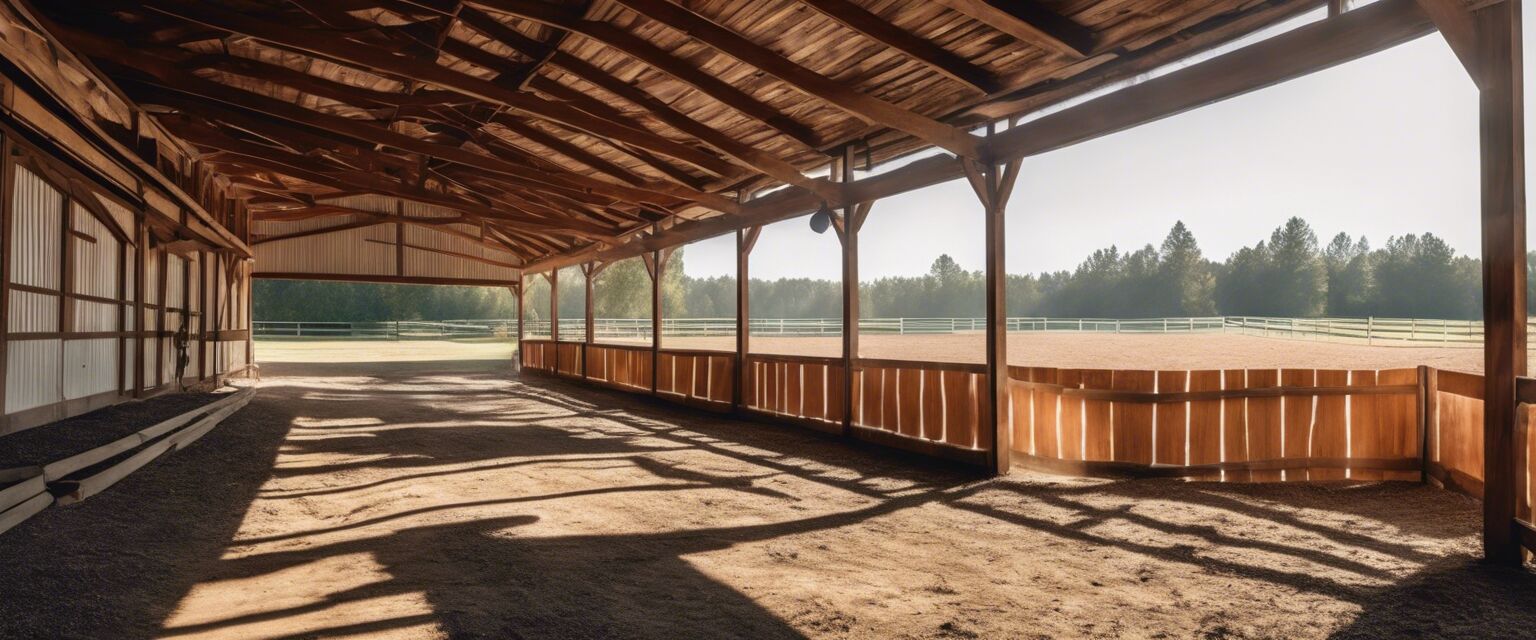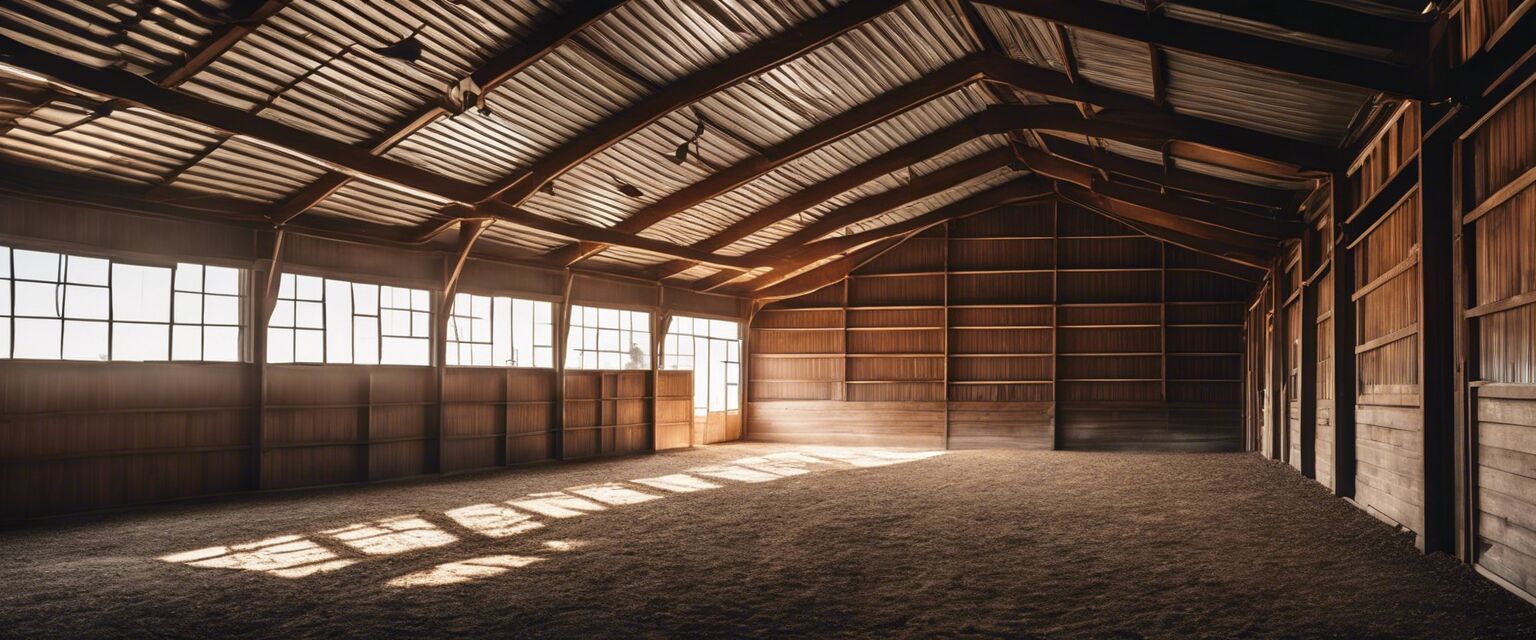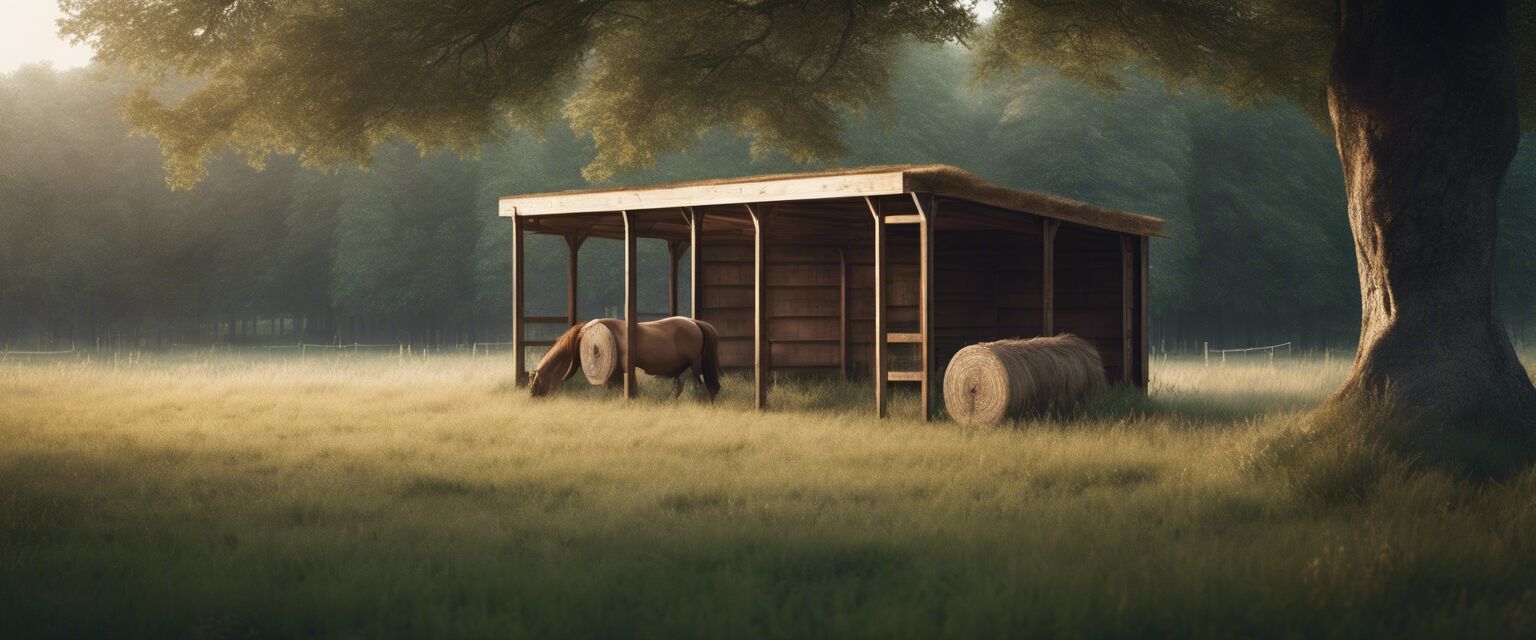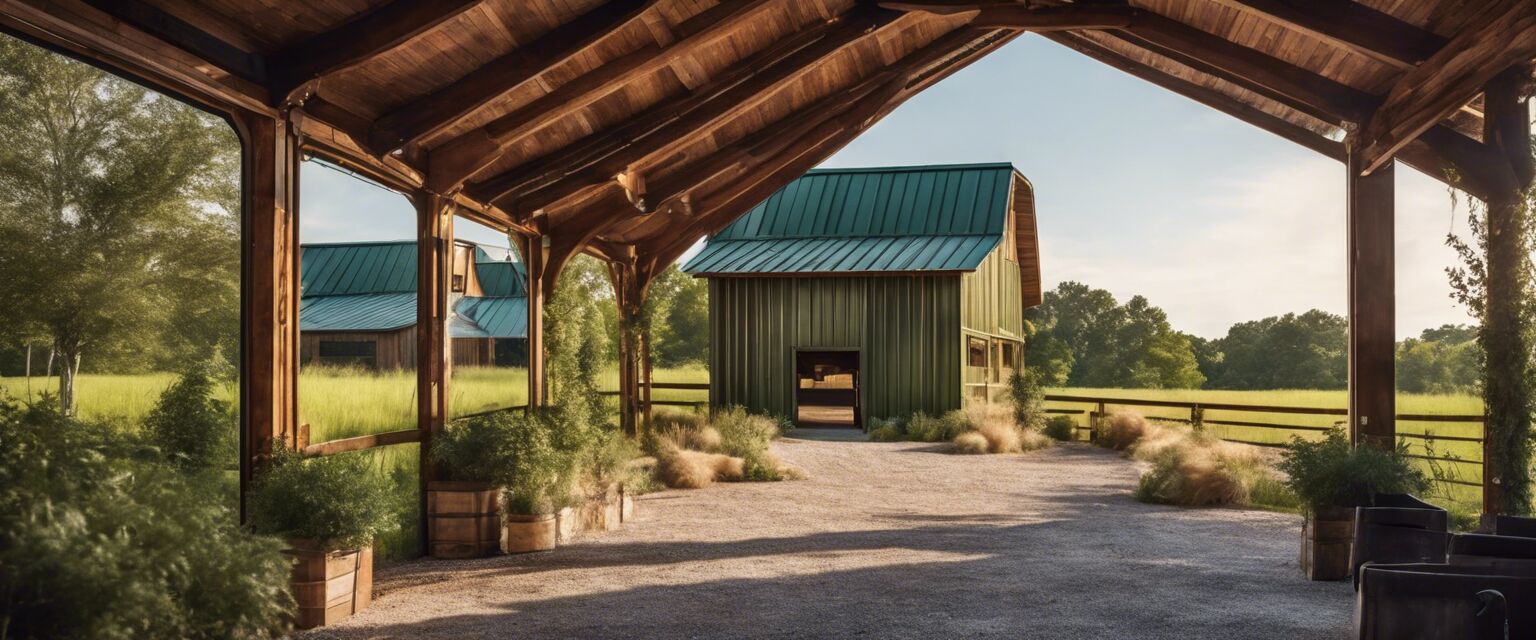
Eco-Friendly Barn Building
Key Takeaways
- Utilize sustainable materials for construction.
- Incorporate energy-efficient designs.
- Implement water conservation methods.
- Consider natural ventilation systems.
- Use eco-friendly finishing products.
Building a horse barn that is both functional and eco-friendly can seem like a daunting task. However, with the right tips and guidance, you can create a sustainable space that benefits not only your horses but also the environment. This guide will provide you with valuable insights into creating a DIY horse barn that is kind to the planet.
Why choose eco-friendly barn building?
Eco-friendly barn building is not just a trend; it's a necessity for our planet. Here are some reasons why you should consider going green:
- Reduces your carbon footprint.
- Promotes a healthier environment for your horses.
- Can save you money in the long term through energy efficiency.
- Enhances the aesthetic appeal of your property.
Essential materials for eco-friendly barns
When planning your barn, the materials you choose play a crucial role in its eco-friendliness. Hereâs a list of sustainable materials to consider:
| Material | Description | Benefits |
|---|---|---|
| Reclaimed wood | Wood salvaged from old buildings. | Reduces deforestation and adds character. |
| Straw bales | Natural insulation material. | Excellent thermal performance and biodegradable. |
| Recycled metal | Metal sourced from recycled materials. | Durable and reduces landfill waste. |
| Green roofing | Living vegetation on the roof. | Improves insulation and promotes biodiversity. |
Energy-efficient designs
Incorporating energy-efficient designs into your barn can significantly reduce energy consumption. Here are some design features to consider:
- Orientation: Position your barn to take advantage of natural light and wind.
- Natural ventilation: Use windows and vents to allow airflow and reduce humidity.
- Insulation: Use eco-friendly insulation materials to maintain temperature.

Water conservation methods
Water is a precious resource, and conserving it in your barn is crucial. Consider these methods:
- Install rainwater harvesting systems to collect and use rainwater.
- Use drip irrigation systems for pasture management.
- Implement greywater recycling for washing and cleaning.

Choosing eco-friendly finishing products
When it comes to finishing your barn, opt for eco-friendly paints, stains, and sealants. Here are some options:
- Low-VOC (Volatile Organic Compounds) paints reduce air pollution.
- Natural wood finishes made from plant oils and waxes.
- Biodegradable sealants for floors and surfaces.
Maintaining your eco-friendly barn
Once your barn is built, maintaining its eco-friendly features is essential. Here are some tips:
- Regularly check for leaks in the roofing and water systems.
- Keep the barn clean using natural cleaning products.
- Monitor energy use and adjust systems as needed.
Pros
- Reduces environmental impact.
- Creates a healthier living space for horses.
- Potential cost savings on energy and maintenance.
- Increases property value through sustainable features.
Cons
- Initial costs may be higher for sustainable materials.
- Requires more planning and research to implement.
- Availability of eco-friendly products may vary.
Conclusion
Building an eco-friendly horse barn is a rewarding project that can benefit both you and your horses while also contributing to a healthier planet. By selecting sustainable materials, implementing energy-efficient designs, and maintaining your barn properly, you can create a space that is both functional and environmentally friendly.
Tips for beginners
- Start small with a budget-friendly DIY project.
- Research local building codes and eco-friendly practices.
- Join online forums or communities focused on sustainable building.
- Consider consulting with an expert in eco-friendly construction.
